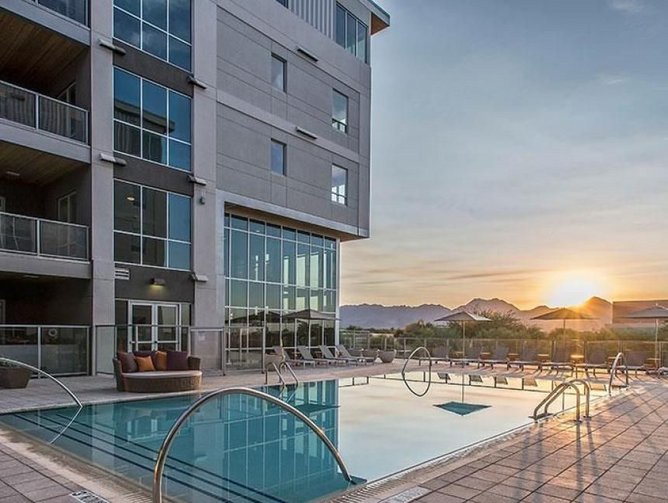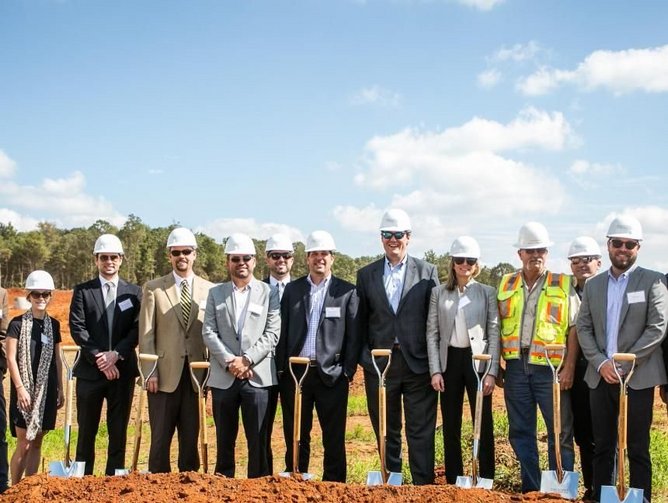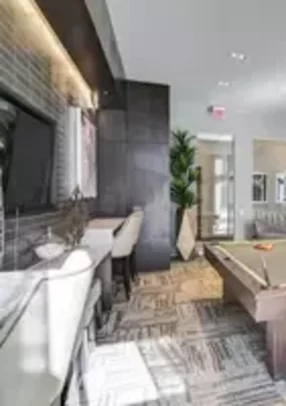Crescent Communities: Building communities for a better quality of life
A typical neighbourhood built by Crescent Communities might feature upscale grocery stores and shops on the ground floor, with apartment homes suitable for families above. They may be positioned intelligently next to multi-modal transportation hubs so cars are used as little as possible. Or they could be strongly themed around food, encouraging residents to grow their own produce and cook at home. Whatever the case, the element they all have in common is that they are designed to offer residents premium quality of life.
Eric Rothrock, the company's Vice President of Preconstruction, manages all estimating, general contractor selection and agreements, and design processes and standards of Crescent's entire nationwide portfolio. Projects can vary from garden apartments for families who enjoy a suburban lifestyle to homes in high-rise buildings leased to millennials, along with increased numbers of people hailing from Generation X.
In construction
Crescent Lucerne in Orlando is one of several ambitious projects Crescent is currently working on. Formerly a hospital site, it is being transformed into a ground up luxury residential community stretching over 4.6 acres, integrating 373 multi-family apartments with food retailers and parking. When it opens in the summer of 2018, it will comprise two separate sites bifurcated by a thoroughfare but connected by two bridges.
In Charlotte, the largest city in the mostly rural, South-eastern state of North Carolina witnessing a huge boom in people moving in, Crescent is developing Crescent Providence Farm, which will be centred on food. Adding to the master planned restaurants, Crescent Providence Farm will have a garden for residents to plant their own herbs, communal dining areas featuring tables made from salvaged trees, and even an outdoor kitchen programmed for cooking demonstrations.
Rothrock explains that although Crescent Providence Farm is in the suburbs, it will have a distinct urban vibe one might typically find in an urban setting, with the garden component being strongly influenced by the surrounding farmland.
"It's unique in the fact that it's not a traditional garden apartment," he says. "It's a four-story elevator-served building with a food inspired theme that's in a real hot spot with easy access to highways. We thought it made sense for people who wanted to live next to a boutique grocer, and wanted to make sure we delivered something harmonious."
Also underway in Charlotte is Crescent Stonewall Station. This community will feature a 19-story high-rise building directly adjacent to the public LYNX light railway station; allowing residents the luxury of never having to drive.
The light rail has been in use for more than 10 years, but it is still expanding and its usage makes the areas it serves highly attractive sites for developers.
"Obviously it's great for us," Rothrock explains, “because for anyone living in Uptown Charlotte for the last 10-15 years, the experience is different from what it used to be. This will be a great way for someone to never need to use their car. [They can] jump on the light rail, step right off the platform, get their groceries or whatever they need, jump back on the light rail, and head home without ever getting into their car."
"It's unique in the growing sunbelt" he adds. "In Chicago, or larger cities, people don't use their cars as much; that’s common place. But in Charlotte and many cities in the south, everyone loves their car and that's something that's changing."
The first phase of this vast project is set to be completed in late 2017. Before construction began, Crescent reviewed seven different potential configurations. During a meeting with the various stakeholders, developers construction managers, architects, and Crescent Pre-construction personnel, the latter used 3D modelling to illustrate the massing of the project as the group was collaborating in real time. The Massing Models were saved using Nextplans, a workflow tool that makes it possible for them to be accessed by all.
At the end of this six-hour meeting they arrived at Crescent Stonewall Station's ultimate design.
"The concepts created that day are very similar to the building you see standing today. It's pretty amazing how that all came together," he says.
Brand new tech
This real-time methodology, using software such as NextPlans that allows all the partners to be involved from start to finish is typical of Crescent's projects.
"It's a collaborative platform. We're able to customize folders and have secure access to all our projects, granting access to partners. This software for internal construction serves as a facilitation software. It also has a tablet and phone app so you can walk around and pull up the drawings on an iPad."
Crescent has recently started using Bluebeam, a piece of software that allows them to edit and share documents online.
"We saw that most of our architects were using it" Rothrock says. "We prefer to control certain aspects of preconstruction and be the initiators of discussions, so we have all the stakeholders in the room and we can take notes in real time on the cloud. Our architects like it because it's all in one place. It's been super beneficial for us, certainly from a time-saving standpoint."
Another piece of software that has proven invaluable is a photographic indexing database called Multivista. This service allows users to zoom in and capture crystal clear images of different building components during each phase of construction. One example could be a window, where constructors can very easily identify issues such as leaks or a lack of proper waterproofing without having to get up close or remove any of its components.
What sets them apart
"Construction pricing is at an all-time high,” says Rothrock. “Over the last four years it has consistently escalated and that makes it more difficult to get deals done.
"General Contractors and certainly Developers, are feeling the pinch of the market pricing,” he says.
However, using novel technology to cut down on costs and time, Crescent is ensuring it continues to get the best value both for itself and its customers to maintain a competitive advantage.
"We're doing everything we can to add value," he says. "Particularly behind the walls and looking at the soil and under the ground, in places where no one sees so we can spend more money on the things that make an impact for our residents.
"We've really taken a deep dive, and we look hard at how we can minimize unnecessary or inefficient costs. We'd rather spend our money on things that our residents want and value."









